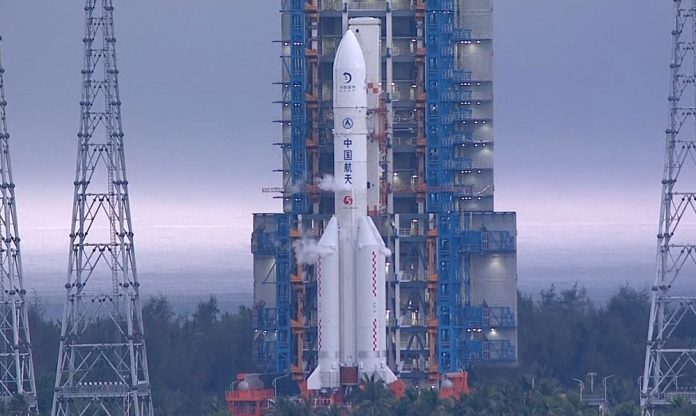China has once again ventured into the realm of space exploration with a groundbreaking mission that aims to retrieve rocks and soil from the far side of the moon. On a Friday afternoon, amidst a flurry of anticipation, the Long March-5, China’s largest rocket, soared into the sky from the Wenchang Space Launch Center on Hainan Island. Carried by this colossal rocket is the Chang’e-6 probe, weighing over 8 metric tons, embarking on a nearly two-month-long odyssey.
This ambitious endeavor marks the first time a country has undertaken such a mission, cementing China’s position as a leading player in lunar exploration. The target of the Chang’e-6 probe is the enigmatic South Pole-Aitken Basin, nestled on the far side of the moon, perpetually veiled from Earth’s gaze. Upon touchdown, the probe will delve into the lunar surface, gathering precious samples before returning them to Earth.
China’s lunar exploration program has been a testament to its rapid advancement in space technology. From the pioneering landing of Chang’e-4 on the far side of the moon in 2018 to the retrieval of lunar samples by Chang’e-5 in 2020, China has consistently pushed the boundaries of what is achievable in space exploration.
The international community has taken notice, with scientists and space agencies from various countries participating in this historic mission. Despite geopolitical tensions, collaborations on scientific endeavors transcend borders. However, notable by its absence is the involvement of U.S. organizations, restrained by legal barriers from collaborating with China in space exploration.
The allure of the moon’s far side lies in its mystery, beckoning scientists to unravel its secrets. With limited human presence and only robotic probes to unveil its mysteries, each mission opens new avenues of discovery. The geological insights gleaned from Chang’e-6’s samples promise to deepen our understanding of the moon’s ancient history, dating back billions of years.
Beyond scientific curiosity, China’s lunar aspirations extend towards establishing a permanent research station on the moon. The proposed International Lunar Research Station (ILRS), a collaboration between China, Russia, and potentially other nations, represents a bold vision for the future of space exploration. Such a station could serve as a launchpad for further exploration of deep space and utilization of lunar resources.
As humanity looks towards the stars, the moon emerges as a pivotal waypoint in our cosmic journey. The quest to understand its origins, composition, and potential resources drives nations to invest in lunar exploration. China’s strides in this domain underscore the importance of international cooperation in unlocking the mysteries of the cosmos.
Looking ahead, the vision of a lunar research station stands as a testament to human ingenuity and the boundless spirit of exploration. By leveraging the collective expertise and resources of nations, we inch closer to realizing our dreams of interplanetary exploration and eventual habitation beyond Earth. With each mission, we take another step towards unraveling the enigma of the universe and shaping the destiny of humanity among the stars.


